Imagine that somebody has asked you to help them to find their strengths and do satisfying work.
One approach is to use many of the exercises that enable people to clarify the specific activities in which they deliver As, rather than Bs or Cs. Another approach is to focus on the way they work best.
Everybody has a successful style of working. Clarifying this style is often the clue to them finding their real strengths. Let’s explore how this works in action.
You can help a person to
clarify their successful style
Everybody has a positive history. They have performed great work, tackled challenges and overcome crises.
Imagine that somebody has asked you to help them to find their successful style. You can do this by guiding them through the following steps.
Here is one way you can introduce the exercise to the person.
My Successful Style
Looking back on your life, describe what for you have been three stimulating and satisfying projects. Here we are using the term ‘project’ in the broadest sense.
You may have got great satisfaction from designing a website, launching a product, organising a charity fun run, leading a team, helping somebody to master a skill or whatever.
Exploring each project in turn, describe the specific things that made each one satisfying.
The person will probably start by saying something like: “The first project that comes to mind is when I …”
They may describe when they studied for a degree, wrote a book, gave a keynote speech, revitalised a team or whatever.
Encourage them to describe at least two and, if possible, three satisfying projects.
You can clarify the principles the person
followed to pursue their successful style
The next step is to help them to clarify the principles they followed and the practical steps they took to achieve success.
How to uncover this information? One approach is to invite them to describe each project in great detail. So you may want to ask some of the following questions.
Let’s start with your motivation. How did the project come about?
Did you set the goal yourself or did somebody else offer you the opportunity? Was it something you felt passionately about or something that matched your values?
What was the trigger that made you really want to do the project?
Let’s move on to the actual goal. How early did you clarify the ‘What’ – the picture of success? Did it come straight away or later?
If other people were involved, how much input did you have in setting the goal? What were the real results you wanted to achieve? What was your picture of success?
How did you settle on the ‘How’ – the key strategies for achieving success? Did you have freedom, within parameters, regarding how you achieved the goal? How did you map out the journey towards achieving the goal?
Let’s move on to how you performed the work. Did you mainly work by yourself? Or did you work with other people? If you worked with others, what were the characteristics of these people?
Did you work for a manager? If so, what were the qualities the manager demonstrated? What went well when working with the colleagues or the manager?
Looking at the work, how did you organise your time? Did you follow a certain daily rhythm? What did you actually do to perform superb work? Did you get some early successes?
How did you check what was and was not working? How did you get support? How did you encourage yourself on the journey?
How did you find creative solutions to challenges? How did you keep your manager informed?
Let’s move on to the actual result. How did you keep working hard to reach the goal?
Was there a specific deliverable you had to achieve? Was there a deadline or some element of performance? How did you know when you had achieved the picture of success?
What was the satisfaction you got from reaching the goal? Looking at the project, what were the most fulfilling things?
What did you do well on the project? What could you do better in the future if you were to tackle this kind of project again?
Are there any other things you would like to say about the project?
Go through each of the projects
in turn. Then ask the person:
Looking back on each of these examples, can you see any recurring patterns?
Bearing these in mind, describe what you believe to be the principles you follow when pursuing your preferred way of working.
You may, of course, have several different successful styles. For example, one when working alone; another when working with other people.
Try completing the following exercise.
One person said, for example:
“My pattern is clear. I love building prototypes, but several characteristics stand out.
“First, I must believe the project will improve people’s lives. Second, I want to have lots of in-put into clarifying the ‘What’ – the goal to achieve.
“Third, I like to have lots of autonomy. Fourth, I prefer to be aiming for a specific deadline. Finally, I love to see the prototype having a positive impact on people’s lives.”
Everybody has their own successful style of working, but several things are worth mentioning.
People often follow certain common principles to perform fine work.
These often mirror the eternal human activities of encouraging, educating, designing, exploring, building, creating, trading, problem solving or whatever.
People express these principles in different ways.
Each individual will express these themes in their own ways. The ways they do this will depend on their own strengths and styles of working.
People can find and follow their successful style.
They can follow their preferred way of working to perform superb work in the future. This brings us to the next stage.
You can help the person to follow
their successful style in the future
People develop, they seldom change. They often learn how to channel their personality, rather than change their personality.
A person’s successful style seems to get more pronounced as they get older. So it can be helpful for them to find and follow their preferred way of working.
Alison, a chief executive, is somebody who expresses a recurring theme in her life. She loves to:
Create stimulating environments in which people can achieve peak performance.
“That sounds a common theme,” somebody may say.
Yes, it is. But Alison’s special contribution is the way she expresses this vocation through various vehicles to do valuable work.
During her life she has, for example, run arts festivals, led great companies and mentored creative performers.
Alison is a superb orchestrator who follows her successful style when pursuing her vocation. This often involves her taking the following steps.
She finds something she feels passionately about.
This must score at least 8/10 on the passion rating.
She sets a stimulating goal.
This must be something exceptional that hasn’t been done before.
She does a reality check with people she respects.
Alison has a set of trusted people with whom she bounces ideas. The outcome can sometimes result in her actually creating a bigger goal. Alternatively, she might say ‘No,’ to the project.
She takes time to reflect.
She make an initial project plan, complete with milestones. Alison then double-checks that the project is stretching and stimulating. If so, she commits to reaching the goal.
She gathers talented people who want to embark on the adventure.
Alison gives them a sense of ownership and makes clear contracts about their contributions towards achieving the goal.
She gets the resources that are required.
She is good at getting the financial and other kinds of backing that are required to reach the goal.
She creates an environment that encourages people to do fine work that contributes to achieving the overall goal.
Alison provides a stimulating atmosphere with lots of inspiration and encouragement. She gives any reluctant people several chances, but then draws a line. People leave if they don’t live the required values.
She encourages people to stay on track and do exceptional work.
She is good at reminding people of the goal, updating them on progress and encouraging them to raise their game.
She delivers the goods.
Alison’s projects often have a sense of performance – something brilliant that must be delivered by a certain deadline. Whilst calm on the surface, she is adrenalin-driven.
The difference between her and other such people is that she is happy: “For others to plant the flag on top of the mountain.”
Alison’s follows this path when pursuing her vocation. As mentioned earlier, the red thread in her life is to:
Create stimulating environments in which people can achieve peak performance.
Whilst she loves doing creative work alone – such as photography – she gets an even greater kick from enabling people to produce something magical. She is now focusing on how she can follow these principles even more in the future.
Imagine you are helping a person to build on their strengths. So far you have explored their satisfying projects and clarified their successful style.
The next step can be to invite them to complete the following exercise.
Looking at their answers, invite the person to explore how they might be able to express their successful style.
There are many models for making this happen. One approach is to invite them to find or create their perfect role.
You may introduce this approach by saying something like:
Let’s explore how you can express your successful style in the future. We can do this under the following headings.
Project
Looking at your successful pattern, what would be the kind of project you would find stimulating?
Are there any potential projects in the pipeline that might fit your pattern? If so, what are these projects?
If not, would it be possible to mould another project to fit your style whilst, at the same time, satisfying the sponsors?
If there are none on the horizon, how could you find or create such a project? Let’s explore the possibilities.
People
Looking at your successful pattern, who are the kinds of people you find stimulating?
What are the characteristics of your ideal manager? What are the qualities of your ideal colleagues? How can you find such characters or build a team of such people?
Place
Looking at your successful pattern, what is the kind of place you find stimulating? What are the characteristics of your preferred culture? What is your preferred environment?
What is your preferred working style? For example, do you prefer to spend all week in the office, on the road or some time working from home? What else would be important regarding the culture and environment?
Crafting Your Perfect
Role – Making It Happen
Bearing in mind what you have written, what would be your perfect project?
What are the specific results you could deliver to a potential employer or customer – by doing this kind of project? What would be the specific benefits to the employer or customer?
How can you find or create your perfect role? What are the specific things you can do to make it happen?
There are many exercises for helping people to build on their strengths. Over the years, I have found one of the most effective has been to help people to find their successful style.
Here is the exercise they can do to follow their preferred working style and craft their perfect role.


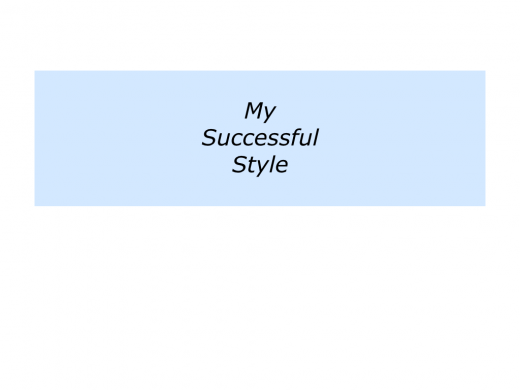
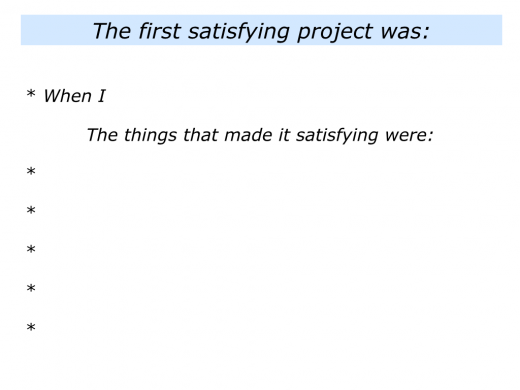
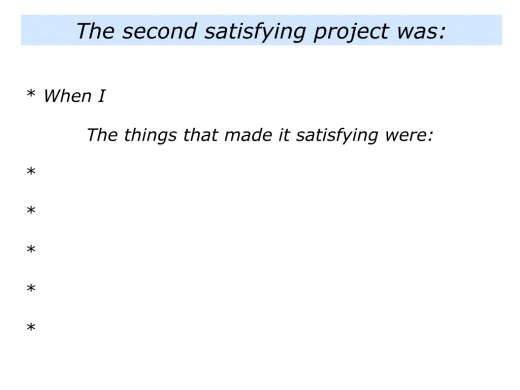
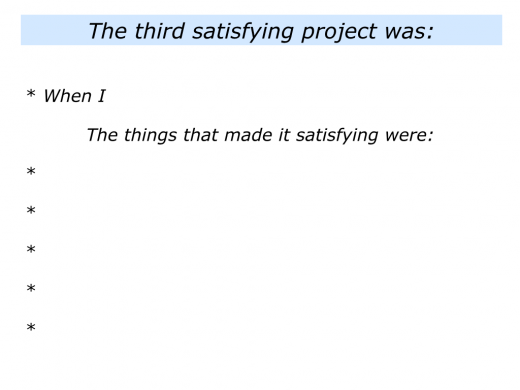
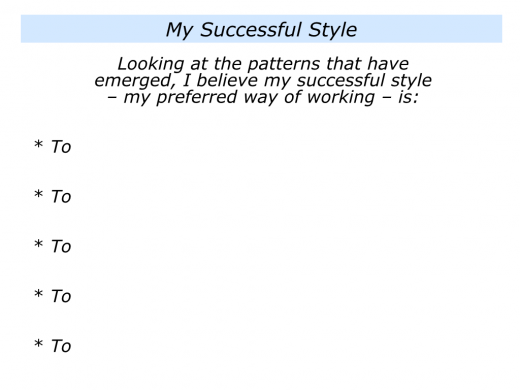
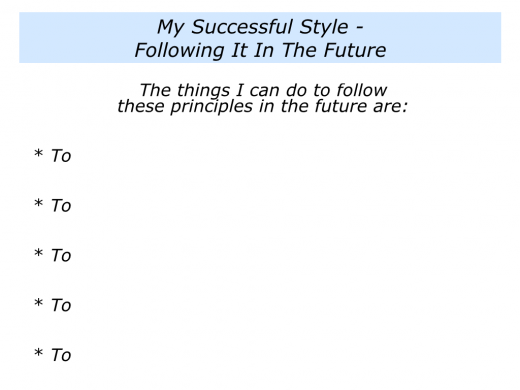
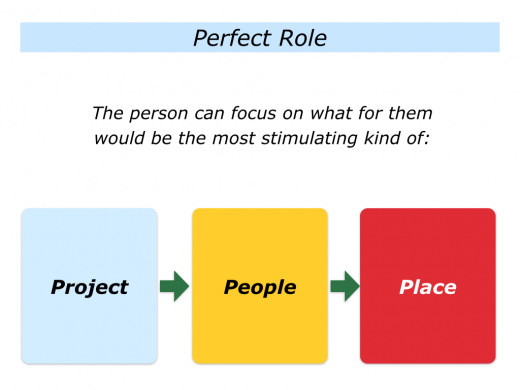
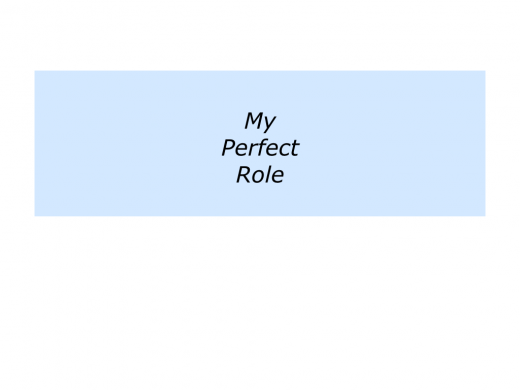
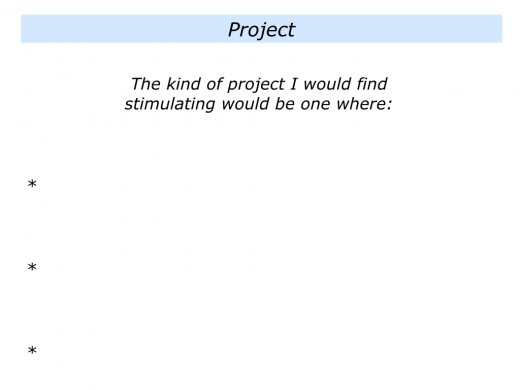
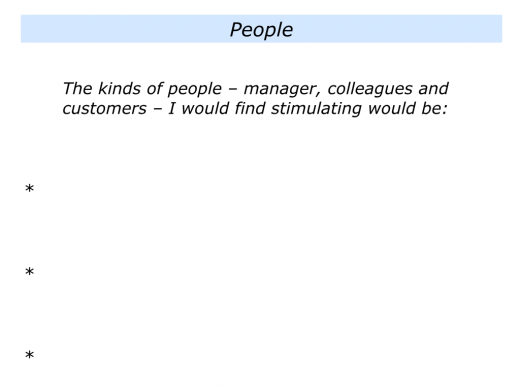
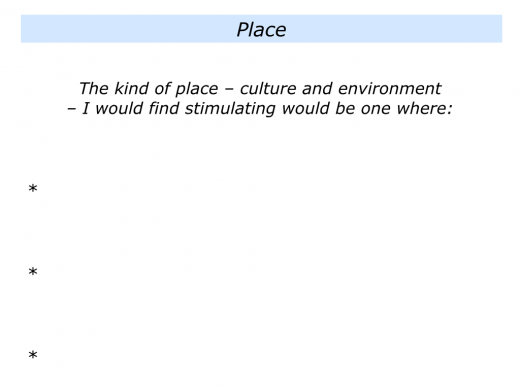
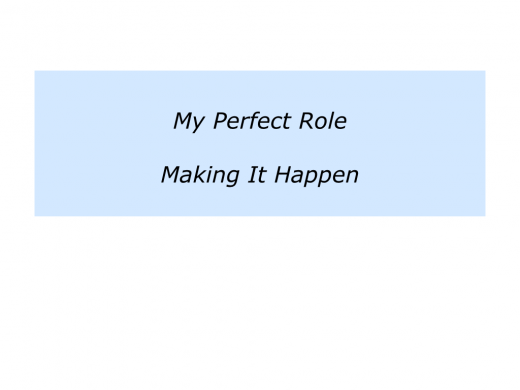
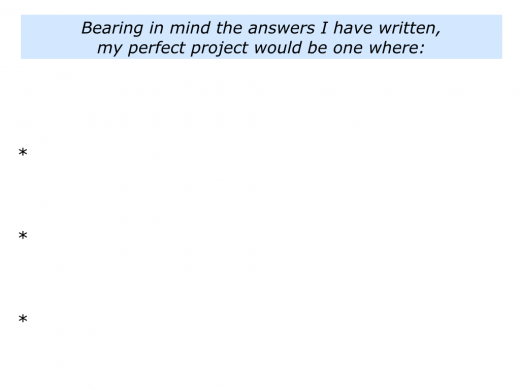
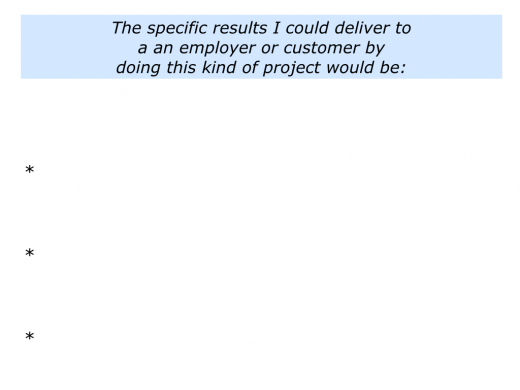
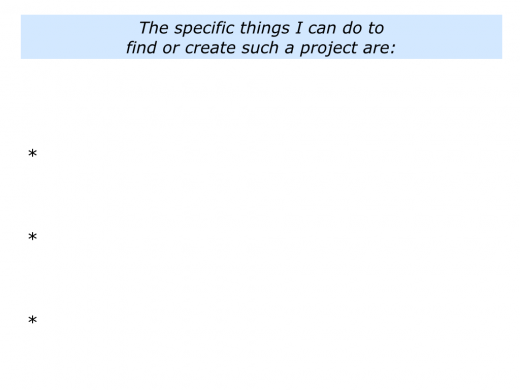




Leave a Reply